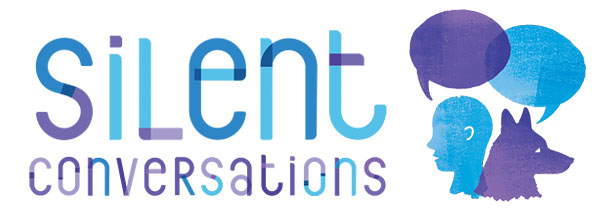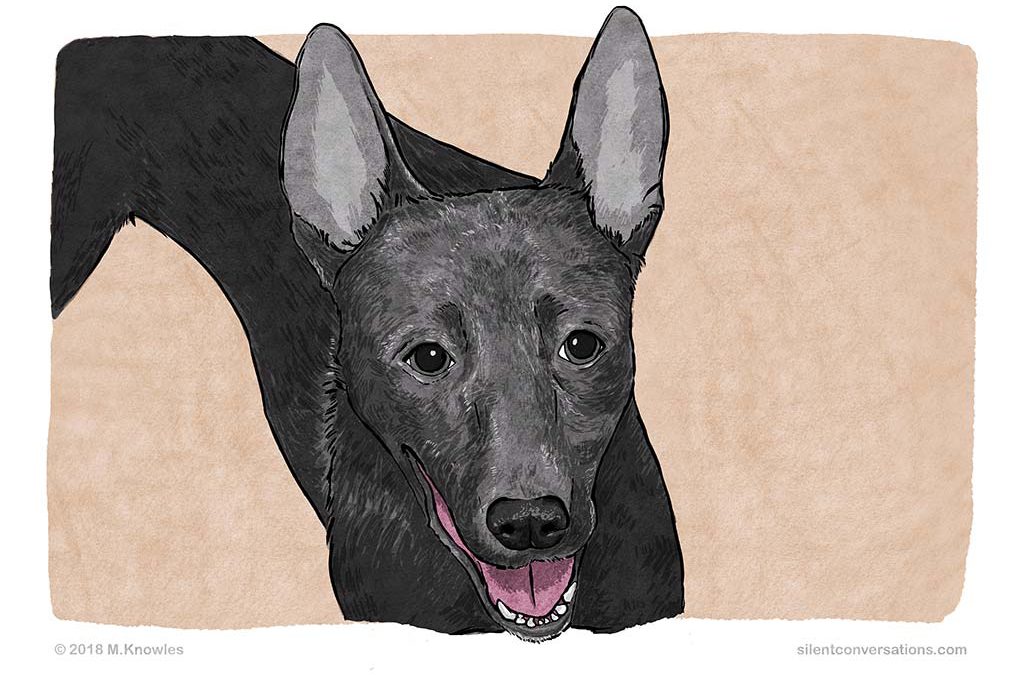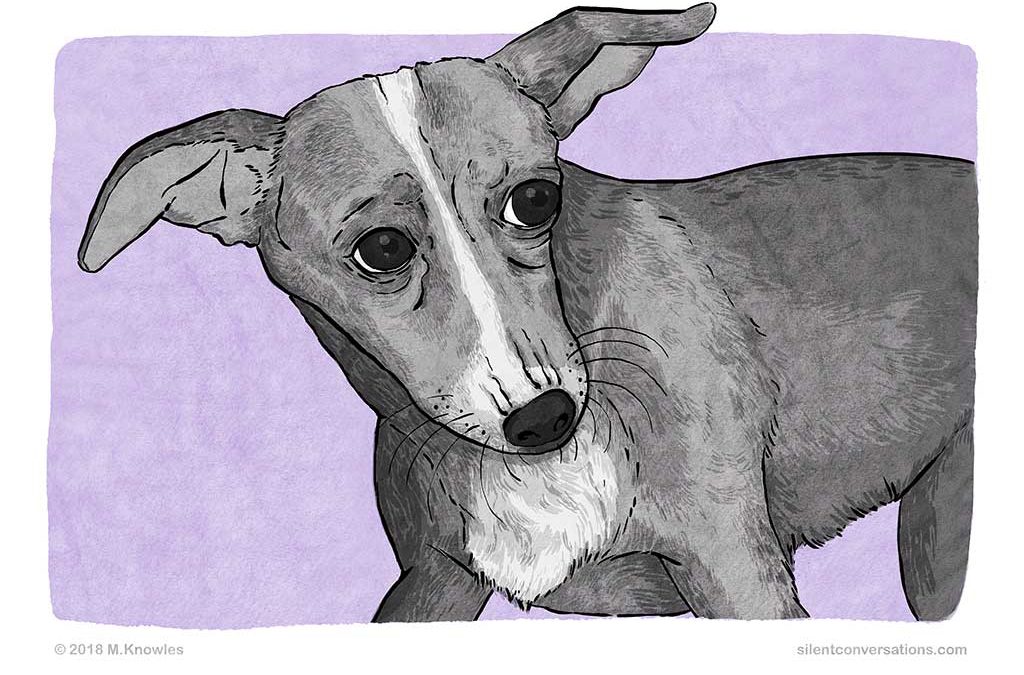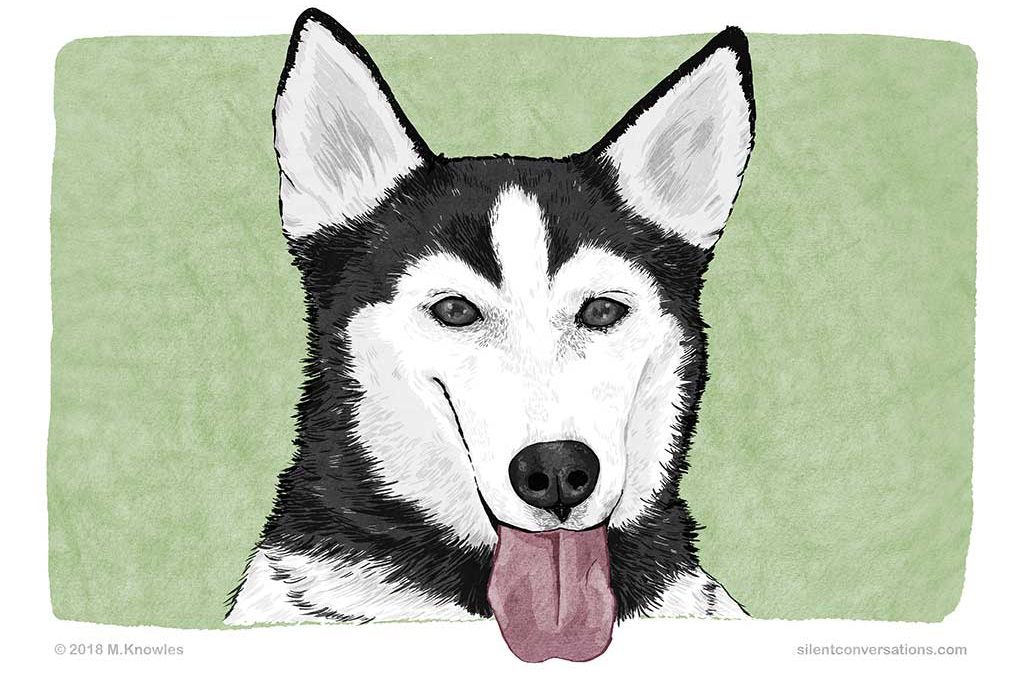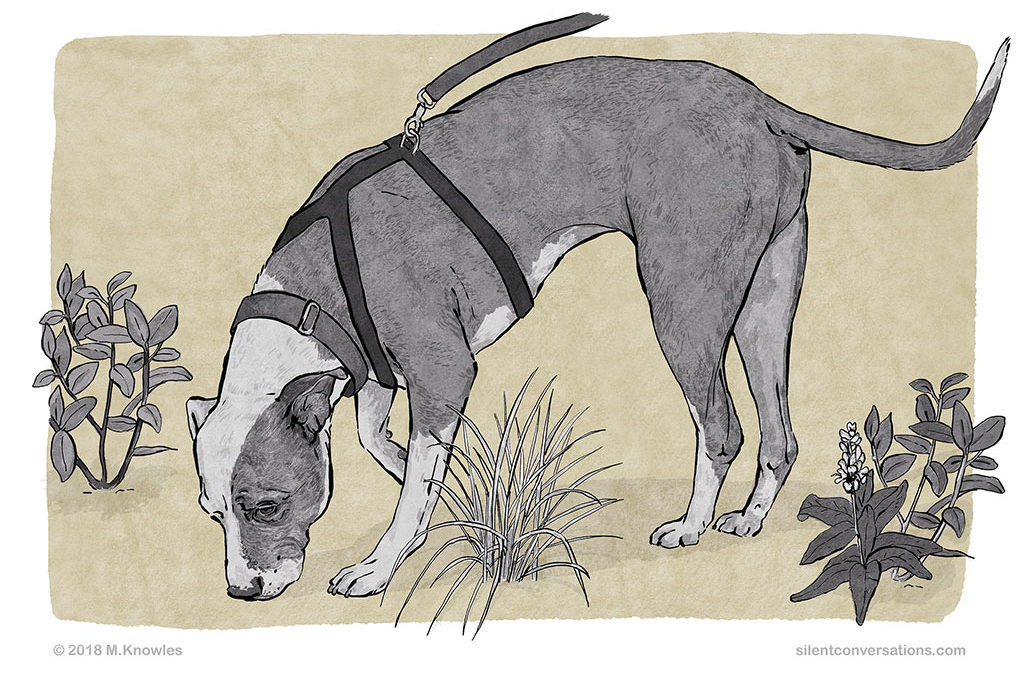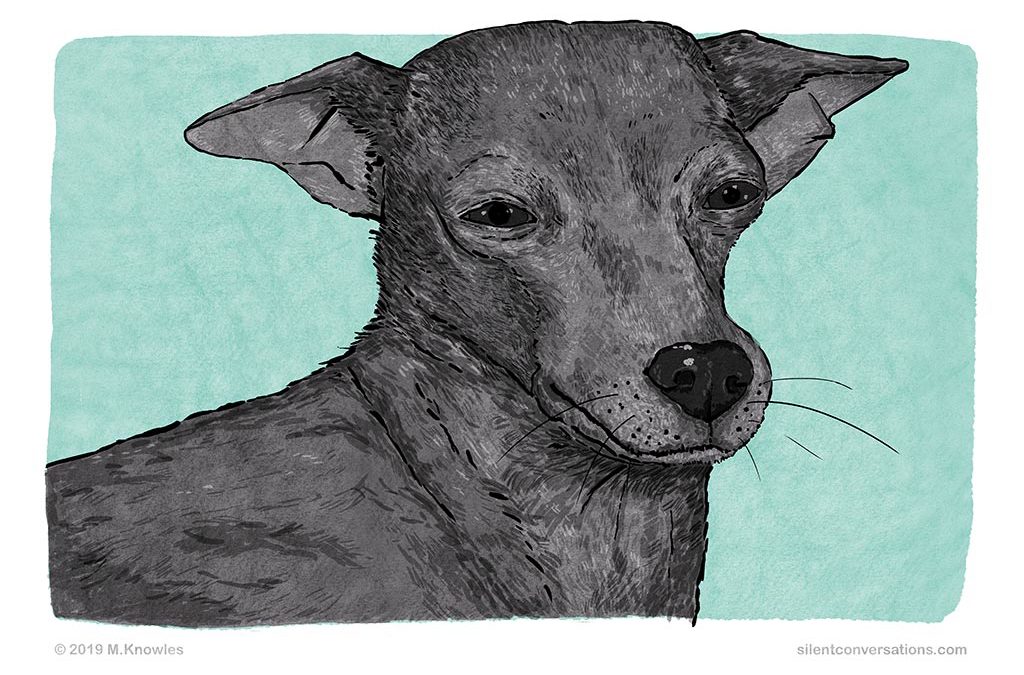
Eyes – ‘Shortening of the Eye’ or Squinting – Dog Body Language
Eyes – ‘Shortening of the Eye’ or Squinting – Dog Body Language
‘Shortening of the eye’ is a dog body language term used to describe when a dog squints his eyes slightly to deliberately soften them when interacting with another individual. It is used as a non-confrontational signal to indicate peaceful intentions in situations were there may be direct eye contact. In dog body language, direct eye contact or staring could be seen as confrontational; a hard stare in combination with a freeze of body is used as a warning. When a dog is relaxed, the eyes appear almond shaped and soft. To clearly indicate peaceful intentions, the dog may accentuate the eyes even further by squinting.
Depending on the context, body language signals, and what the rest of the dog’s body position is conveying at the time, squinting may also be used when a dog is displaying appeasement. In the case of appeasement, the eye may be squinted almost totally shut, which is different to the subtle slight squint involved in ‘shortening of the eye’. A dog that is showing appeasement signals may also be feeling some fear and may either freeze or crouch. It is best not to approach a fearful dog. There is a big difference in body language between a dog showing appeasement and a dog squinting his eyes to be polite. A dog that is comfortable and squinting his eyes to be polite might approach, whereas a fearful dog will keep his distance. There will be further differences with regard to body movement, as the comfortable dog will have a looser body and move with ease, whereas the fearful dog may seem frozen or stiff, showing little movement.
When interacting with a dog, you can squint your eyes ever so slightly to be polite; a slow blink can also be used. It is best to avoid direct eye contact by using peripheral vision and turning your head away slightly. A combination of this body language may be used to show polite intentions, especially towards a dog that is not at ease. It is always best to give any dog space and not approach. Read more about social interactions with dogs in this article: ‘How do you greet a dog politely?’
Since this article pertains to one area of the body, bear in mind the importance of observing the dog’s full body language and signals, as well as the context in which they appear, before attempting an interpretation. There may be different interpretations, depending on the combination of full body language observed.
Here are a few examples of situations where a dog may offer shortening of the eye:
- A person is sitting on the ground and taking photos of the dogs in the park. One of the dogs, a retriever, is familiar with the person. The retriever spots the person with the camera and decides to approach them, as all the dogs he has been socializing with have moved on. He approaches with a loose flowing body, trotting up with his tail at about level with his back, giving a slow, sweeping wag. There is a slight curve in his body on approach. He lowers his head ever so slightly; he gently squints his eyes slightly on approach. His ears are relaxed and at the side, and his mouth is open and relaxed with a slight panting tongue. The retriever is at ease and trying to be polite by approaching with the slight curve of his body and shortening of the eye.
- While sitting on the ground, a dog is being scolded by a person. As the person raises her voice, he pushes his ears back tightly against his head and squints his eyes shut. His mouth is closed and he gives a few careful lip licks. He remains still and occasionally opens his eyes slightly, giving a few blinks before squinting his eyes again. As the scolding tone of the person’s voice eases off, the dog wags his tail low to the ground, quickly from side to side. The dog is offering appeasement in response to his guardian’s raised voice and is trying to communicate he means no harm.
- A dog is sitting near a group of people on the grass in a park. One person, who is sitting quite close, is looking at the dog and giving direct eye contact. The dog averts the gaze of the person by turning her head ever so slightly away and softening her eyes by squinting. The dog is trying to give a non-confrontational response to the direct eye contact.
These are just a few examples; there may be many more. Start observing to see if you can notice any squinting or shortening of the eye in different contexts. As discussed below, interpretations such as the above examples should not be attempted without careful observation and consideration of all aspects of the situation.
A few notes to consider when observing dog body language:
Observation before interpretation
Interpretations should be offered only once you have observed the complete interaction and taken note of the wider picture. To offer an unbiased interpretation of the body language, observe and take note of the situation, taking into account the dog’s whole body, the body language signals and environment first before offering an interpretation. List all the body language you see in the order that it occurs; try to be descriptive as possible without adding any emotional language. For instance, saying a dog looks happy is not descriptive and would be seen as an interpretation rather than an observation.
You could however list what you observe: ears to the side, eyes almond shaped, slight shortening of the eye, mouth open, long lips, tongue out, body moving loosely, body facing side-on, tail wagging at a slow, even pace at body level.
From the observation I could interpret that the dog seems relaxed or comfortable. I still prefer to say relaxed rather than happy, as I feel you will truly never know exactly what the dog may be feeling on the inside emotionally. It is quite likely the dog may be feeling happy, but I prefer to comment on how the dog is behaving in response to the situation rather than presuming internal emotional states.
The importance of viewing body language within context
Interpretations can vary depending on the context. It is possible for certain body language to be used in different contexts and have subtle differences in meaning within those contexts. Individual body language signals should not be observed in isolation; the wider picture should be considered. Take note of what the dog’s body as a whole is saying. Keep in mind each dog is an individual with varying skills and experiences. What may be typical for one individual may not be for another. In order to observe body language in context, consider the following: the situation, body language signals, the body language expressed by all parts of the dog’s body, the environment, and the individuals involved. It is worth noting how the body language changes with feedback from the environment or the other individuals interacting.
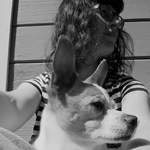
Martha Knowles
Author
My vision is to create a community of dog guardians who share their observations and interpretations of their dogs’ silent conversations. Hopefully, these experiences and stories will provide some insight into dog communication, which is often overlooked by the untrained eye because it is unfamiliar to humans. We are accustomed to communicating mainly with sound, so we are not attuned to the silent subtle gestures and body language used by dogs to communicate. If you take the time to observe, you will start to see these 'silent conversations' going on around you. My dream is for dog communication to become common knowledge with all dog guardians and as many people as possible. Surprisingly, there are still some professionals working in various dog-related careers who are uneducated about dog body language. Greater awareness of how dogs communicate will help to provide better understanding and improve the mutual relationship between dogs and humans. This will promote safer interactions between our two species and hopefully remove some of the expectations placed on dogs within human society. I would like dog guardians to feel empowered with their knowledge of dog communication so that they can be their dogs’ advocates and stand up for themselves and their dogs when it really matters.
